In 1898, tensions between the US and Spain over the remains of Spain's Caribbean empire boiled over after the battleship Maine blew up in Havana Harbor. The US declared war and blockaded Cuba, while the Asiatic Fleet under George Dewey destroyed the Spanish fleet in the Philippines at Manila Bay. The Spanish dispatched a fleet under Admiral Cervera to break the blockade, but it ended up trapped in Santiago on Cuba's south coast. The Americans landed troops and tightened their blockade, and on Sunday, July 3rd, Cervera finally sortied. Three of his cruisers were destroyed almost immediately, while the last one survived less than four hours. Santiago itself surrendered two weeks later, the last major action of the war in Cuba.
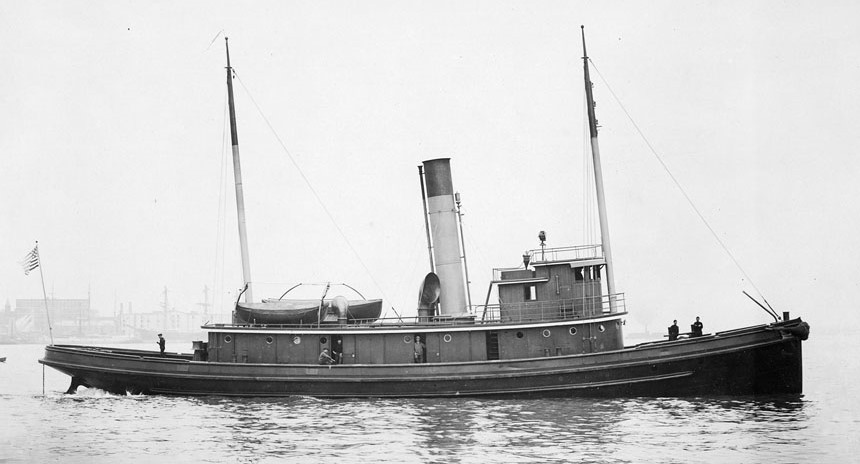
Armed tug Wompatuck, one of the vessels that attacked Manzanillo
However, the end of major actions didn't mean that the waters around Cuba were entirely peaceful. The primitive state of land transportation meant that there was a thriving coastal trade which needed to be cut. Large warships couldn't venture close enough to shore to do so, and the USN had to bring in armed yachts and tugs to do the job. One notable node of this trade was the port of Manzanillo, which American vessels first attacked on June 30th. They managed to destroy a small gunboat, but then ran into a flotilla of armed vessels, the largest Spanish naval force still in Cuba, guarding Manzanillo itself. Their fire ruptured the main steam pipe of the armed yacht Hornet, badly scalding three men, one of who later died. The Spanish suffered only light casualties, and eventually the Americans had to retreat, towing Hornet clear.
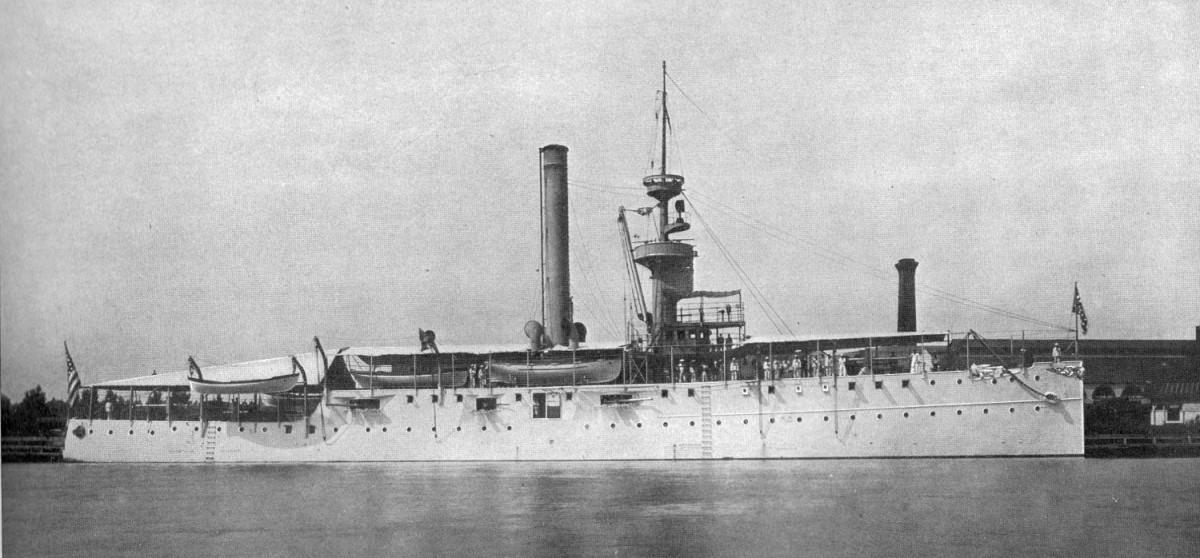
Gunboat Helena, whose "jam factory" stack was intended to let her burn wood
The next day, two more ships arrived at Manzanillo, expecting to meet the first squadron there. They found no friendly ships, but still steamed into the harbor. They were somewhat more successful than the previous squadron, but were unable to close with and destroy the defenses, and eventually had to fall back. It wasn't until July 18th that sufficient forces were assembled to overcome the defenders, with the combined forces from the first two battles, now repaired, reinforced by the gunboats Wilmington and Helena. They sailed into the harbor using three different routes to trap the Spaniards, and it was readily apparent that the balance of firepower had swung in favor of the Americans. Within three hours, they had managed to sink every ship and hulk in the harbor before withdrawing back to the main fleet.1
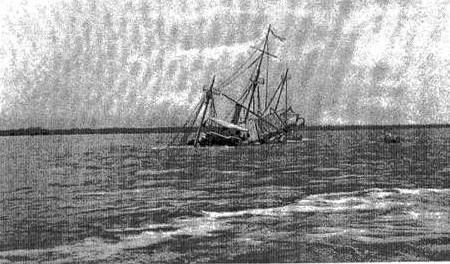
Spanish gunboat Jorge Juan sinking at Nipe Bay
The last major naval engagement in Cuban waters was three days after the fleet at Manzanillo was destroyed, when a small American squadron attacked Nipe Bay on the northeast coast of Cuba. Much like Santiago, Nipe Bay had a narrow mouth protecting a broad stretch of water, with the entrance guarded by forts and a minefield. The forts had been disarmed and the guns moved elsewhere, and the squadron ran safely through the minefield, surprising and promptly sinking a Spanish gunboat. Another was scuttled to avoid capture, and the local forts were bombarded with no American casualties.
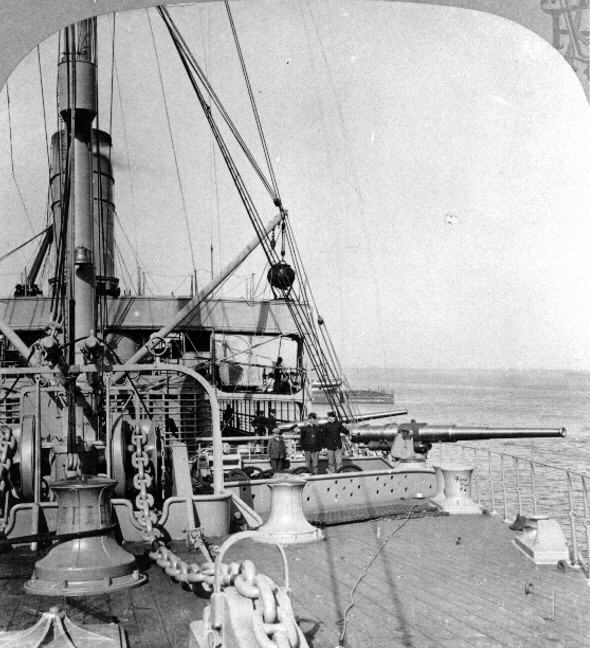
A deck gun on St. Paul
But Cuba wasn't the only Spanish position in the Caribbean. They also owned Puerto Rico, which the Americans had bombarded back in May. Once it was certain that Cervera wasn't waiting over the horizon to pounce, a blockade was implemented around Puerto Rico, maintained by converted liners. On June 22nd, the Spanish sent the destroyer Terror, left behind by Cervera after a mechanical casualty, and the old cruiser Isabel II out to challenge the auxiliary cruiser St. Paul. Terror charged the American ship, firing frantically with her 6-pdrs. St. Paul replied with a trio of 5" QF guns, quickly disabling the destroyer's steering gear. As she turned out of control, another shell struck, opening her hull, killing two men and putting one of the two engines out of commission. Terror turned for home, able to make only 16 kts. Even this wasn't enough, and she had to be beached to keep her from sinking. Isabel II quickly decided not to challenge St. Paul and returned to port.
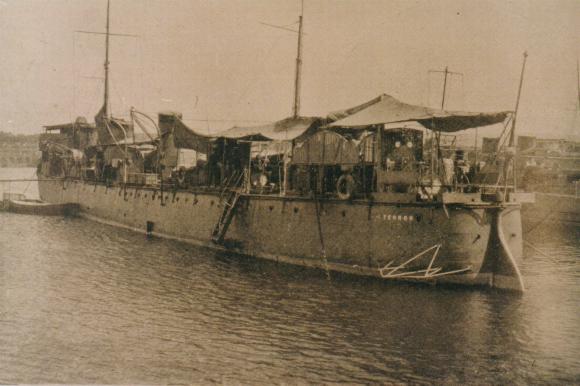
Terror being repaired after her encounter with St. Paul
St. Paul was soon replaced off San Juan by Yosemite, another armed liner, most of whose crew were members of the Michigan Naval Militia. On the 28th, Yosemite sighted a ship, which turned out to be the Spanish blockade runner Antonio Lopez. Lopez ran for the cover of the forts guarding San Juan, but her captain was unfamiliar with the area, and promptly ran her onto a reef. As she was carrying a great volume of desperately-needed supplies, the Spanish sent a sortie to get her off, lead by Isabel II and escorted by the gunboats General Concha and Ponce de Leon. This force was still outgunned by Yosemite, but Lopez had grounded within range of the forts, which evened the odds and drove the American ship off. Attempts to free Lopez were unsuccessful, but the Spanish managed to offload almost all of her cargo before she was destroyed by the cruiser New Orleans in mid-July.
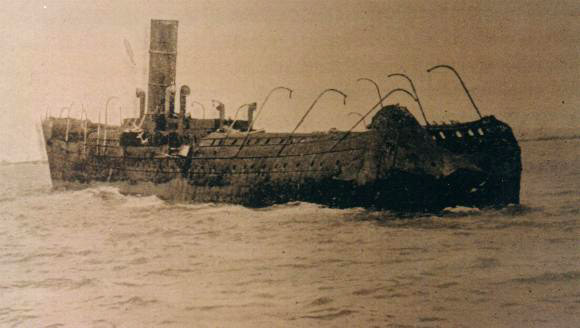
The beached hulk of Antonio Lopez
On July 25th, an American expeditionary force began landing on Puerto Rico, covered by Gloucester, the only ship capable of entering the port of Guanica. The landing itself went reasonably smoothly, with only light Spanish opposition. Thousands of troops were soon ashore, and by mid-August the Army had secured about a third of the island. Naval involvement was minimal, as the Spanish had only the handful of ships trapped in San Juan and the Army seemed happy to march overland instead of using amphibious mobility to avoid the defenders.
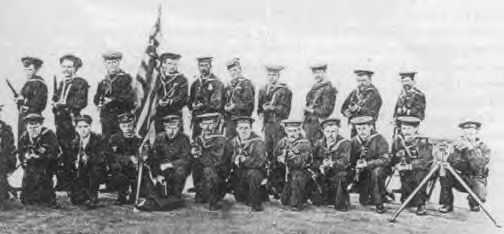
The Marine detachment from Gloucester
Instead, the battleships and armored cruisers were readied for dispatch to European waters. Spain had dispatched its two remaining armored ships to try to retake the Philippines from Dewey, and half of the vessels were intended to go all the way to Manila, while the other half were intended to operate along the Spanish coast. Plans for this operation were discussed publicly in hopes of forcing the Spanish to recall their force, although even after this was successful, there were fears of German intervention in the Far East which prompted some to want to dispatch at least a few ships anyway. But by the time the force was ready, the peace negotiations were well underway.
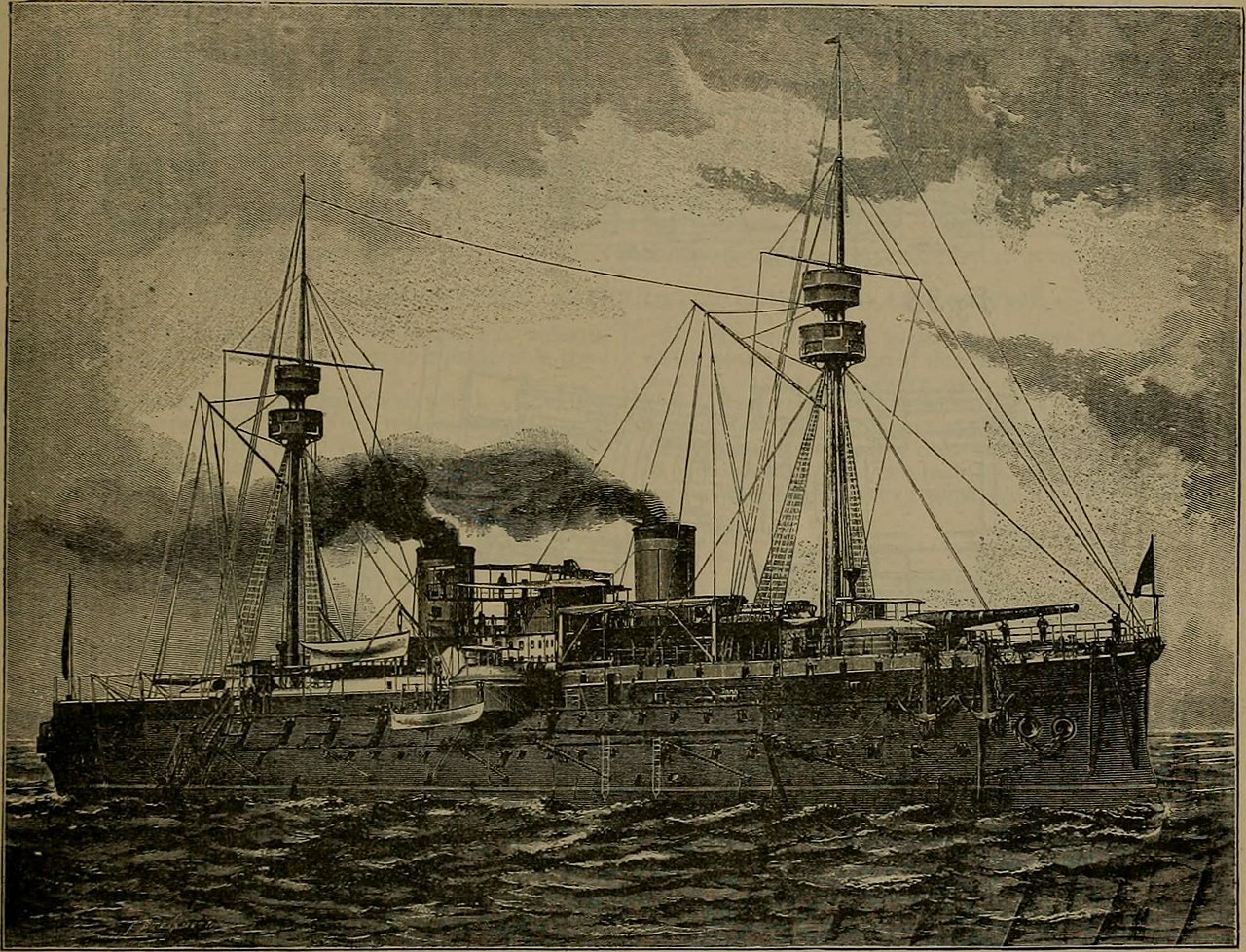
Pelayo, Spain's only battleship and flagship of the abortive expedition to retake the Philippines
These, prompted by the Spanish defeat at Santiago, had begun in mid-July, and were formally concluded on August 12th, when an Armistice was signed in Washington. Formal peace negotiations would take place in Paris starting in October. The last shots of the war were fired in Manila a few hours later. Filipino revolutionaries had besieged the city, and the Spanish commander arranged with Dewey using messengers to stage a mock battle that would leave the city in American hands and keep the revolutionaries out. Not everyone got the message, but on the whole, a largely bloodless handover was carried out.
The final treaty was agreed upon that December. The US couldn't annex Cuba under the terms of the Teller Amendment, but the Philippines, Puerto Rico and Guam were all on the table. The American negotiators snapped them up, offering $20 million for the Philippines and nothing for the other two. The result provoked widespread dissent on both sides, with Spain claiming to have been cheated and many Americans opposed to what they saw as imperialism, but it was eventually ratified.2 America now had serious interests in the Far East, setting a course that would eventually bring it into conflict with Japan. The only remains of Spain's empire were the Caroline and Northern Marianas islands, which were sparsely inhabited and essentially worthless by themselves. They were quickly sold to Germany. German ownership lasted a mere 15 years before WWI broke out and Japan seized them. A quarter-century later, some of these islands would become vital stepping-stones for the American drive across the Pacific.
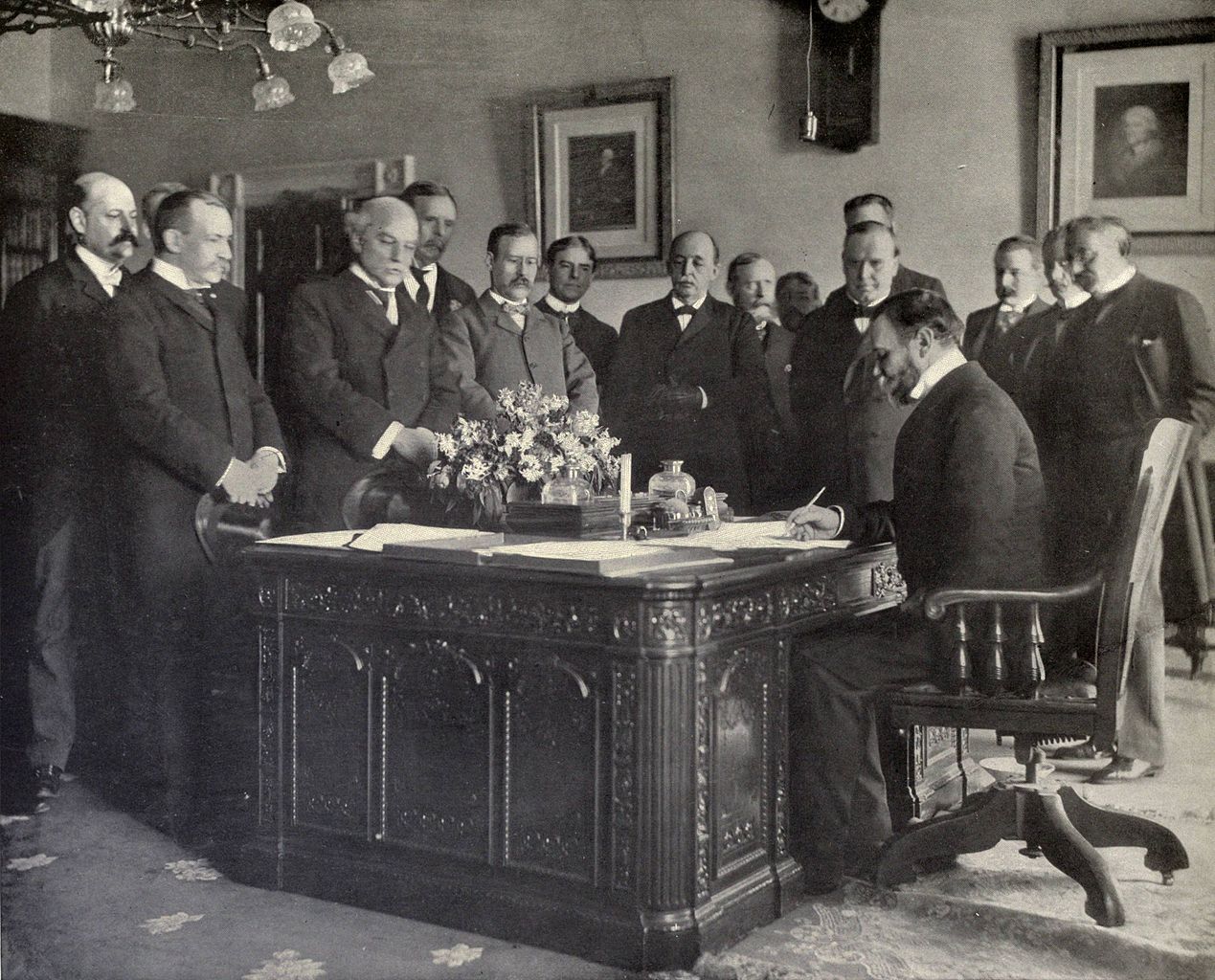
The Spanish-American War's consequences were far-reaching. It redrew the map of the Pacific, placing America and Japan on a collision course. It replaced a tottering empire with a reluctant one on the world stage. It straddled two eras in naval history. Pre-dreadnoughts went into action for the first time, but they did so at ranges that would be considered suicidally short a decade later thanks to improved fire control. And it was the coming-of-age of the modern USN. It had emerged from its post-Civil War doldrums and delivered Spain an overwhelming defeat. It would never again be possible to look at the world's navies without considering that of the United States.
1 The town itself remained in Spanish hands, and a joint American-Cuban force was in the process of securing it when the Armistice was signed to end the war. ⇑
2 Another consequence was a major insurgency in the Philippines, which took several years to control. ⇑

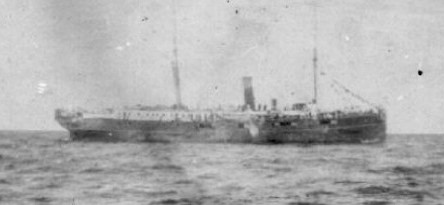
Comments
I'm not seeing any footnotes on this post, despite little numbers appearing in the text.
Oops. I added footnotes late, and didn't do the formatting to make the text display. Fixed.
@bean, Yes I can see the footnotes now. Pat
And... some sort of other bug appears.
I feel like Japanesse control of these foward bases allowing for rapid capture of Gaum and operations elsewhere should also be mentioned.
If I was doing a post on the full effects of the Spanish-American War, yes. This is intended as a really high-level overview, and I mostly wanted to mention this as where the Japanese Pacific empire came from.
I guess my objection is that the current phasing implies that the Mandates being in Japanese hands was an advantage for the American war effort.
Maybe. Landings in the Mandates allowed US forces to get in practice while building up strength for later operations against more distant and more difficult targets.